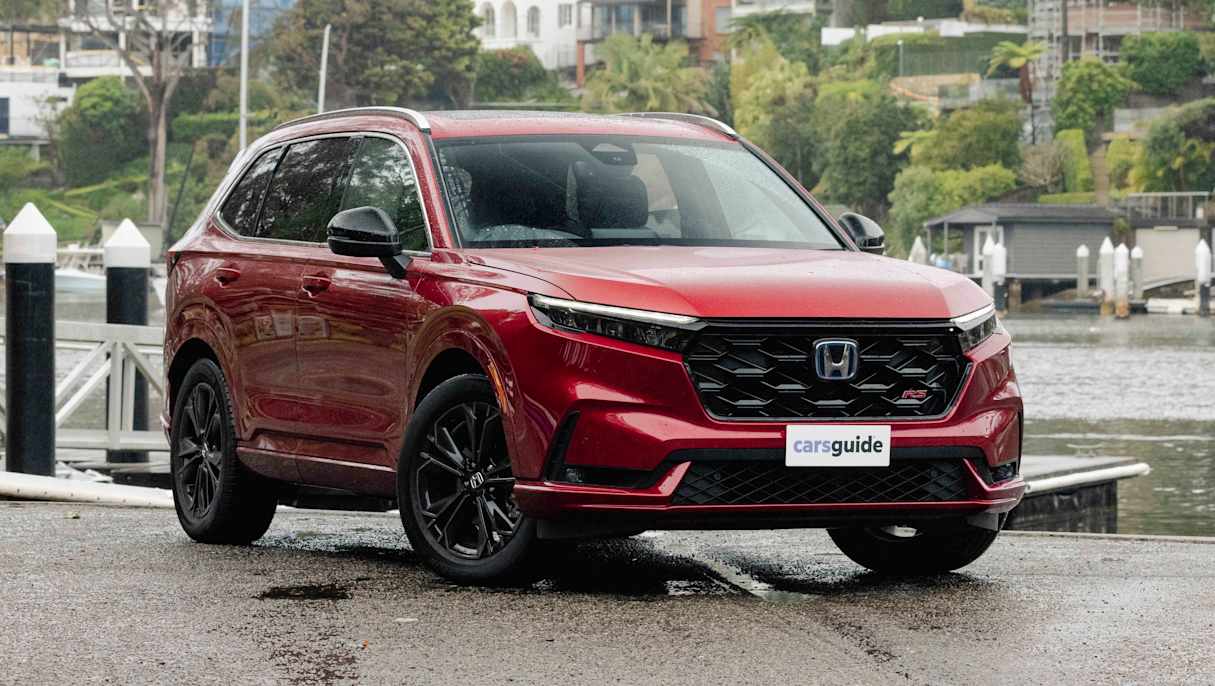Honda Australia is preparing to ride the wave of emissions regulations, with company management confident in its hybrid-first strategy.
At the moment Honda does not have a battery electric vehicle or a plug-in hybrid in its local line-up. That will change soon, with Honda previously confirming its first BEV will hit Australian showrooms by the end of 2025.
There is at least one hybrid grade of each model line - Civic, Accord, HR-V, ZR-V and CR-V - with more hybrid variants on the way.
Without more electric and plug-in models, Honda could face penalties under the Federal Government’s New Vehicle Efficiency Standard (NVES).
NVES punishes carmakers $100 for every gram of CO2 emitted over a certain threshold for every vehicle sold. The threshold lowers every year until 2030. Carmakers can offset the penalties with sales of hybrids, plug-in hybrids and electric cars.
Honda Australia Director of Automotive Robert Thorp said the company’s objectives include net zero emissions by 2050, adding “any actions that are promoting emission reductions, are actions that we would, as a principle, support.”
Thorp said the challenge with NVES will be “balancing the consumer demand with where the targets are actually set.”
“And whether or not that sort of legislative type standpoint is going to match consumer demand. And obviously, if there's a mismatch between the target expectation and where, theoretically, the government wants the industry to look like versus what consumers ultimately choose, what they ultimately pay money for, that mismatch, I think, is going to be there over the next two or three years. Meaning that penalty is going to be likely within that equation.”
Thorp said the Japanese carmaker is confident in its current model and powertrain strategy but wouldn’t be drawn on whether the company will end up paying NVES penalties.
“From our perspective, we're very comfortable where we sit in terms of our transition to hybrid before electrification. I can't definitively say we will or won't be paying penalties. I think to some extent, we've got a view and a plan of what it could look like, but we also recognise that it's potentially going to be changing with consumer demand, with what we can bring to market, how soon, how much we can sell it at certain points.
“So it's hard to be super definitive on that, but I do think that there will be a mismatch between the two, and then how the industry and how we respond is going to be the challenge. So striking that balance is just going to be a challenge.”
Honda Australia President and CEO Jay Joseph added to Thorp’s comments, referencing recently announced tariffs in Honda’s top market, the USA, with reflections on regulation more generally.
“It changes all the time, because a supplier might have a shortage of raw material that goes into building a component that affects production in one region, but then we have to trade that off, because we're trying to keep everything, the whole machine, humming.

“So there's a lot of different forces, but at the end of the day, it's what the consumer chooses. And you can incentivise and penalise consumer choice, but that doesn't change taste. You can't regulate taste. And that's a fundamental issue here.”





.jpg)

.jpg)


_0.jpg)
 (1).jpg)

.jpg)
.jpg)
_0.jpg)

.jpg)
.jpg)
_0.jpg)



_0.jpg)

.jpg)



.jpg)